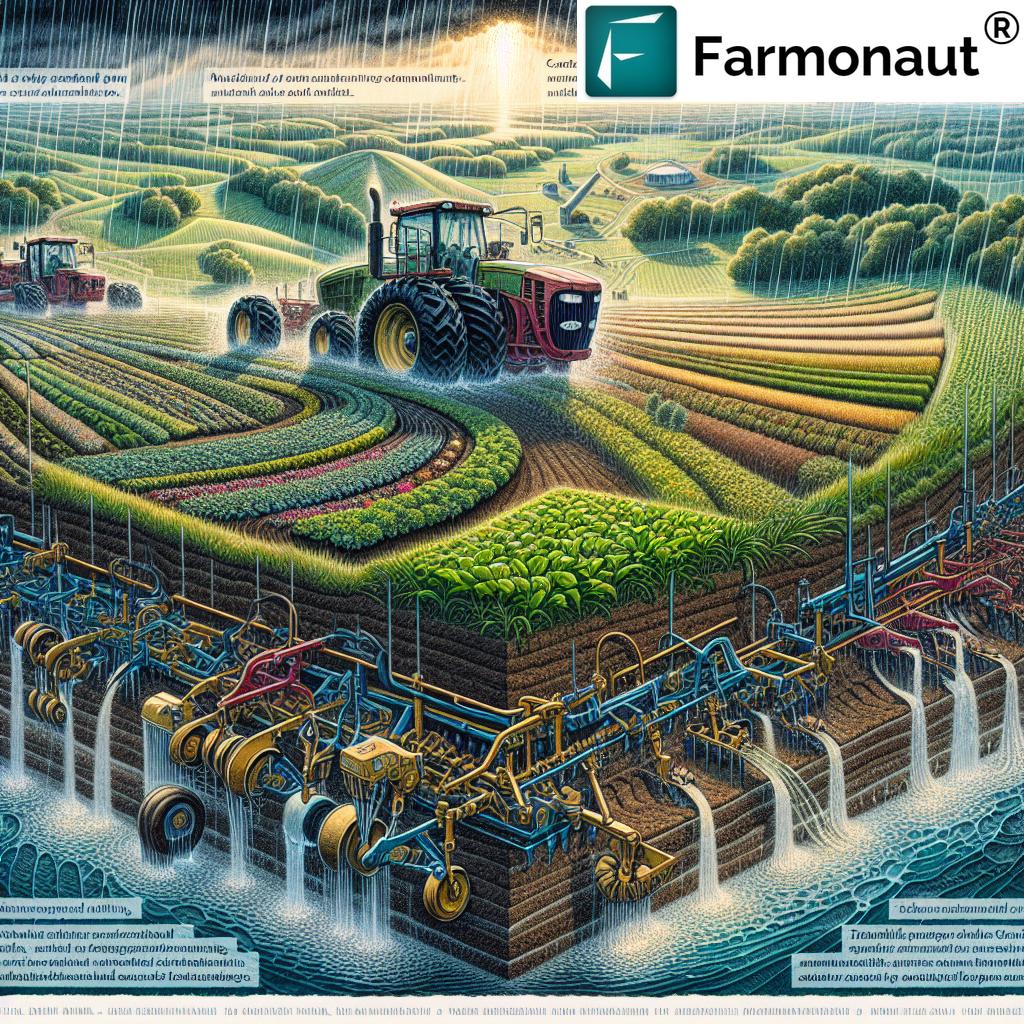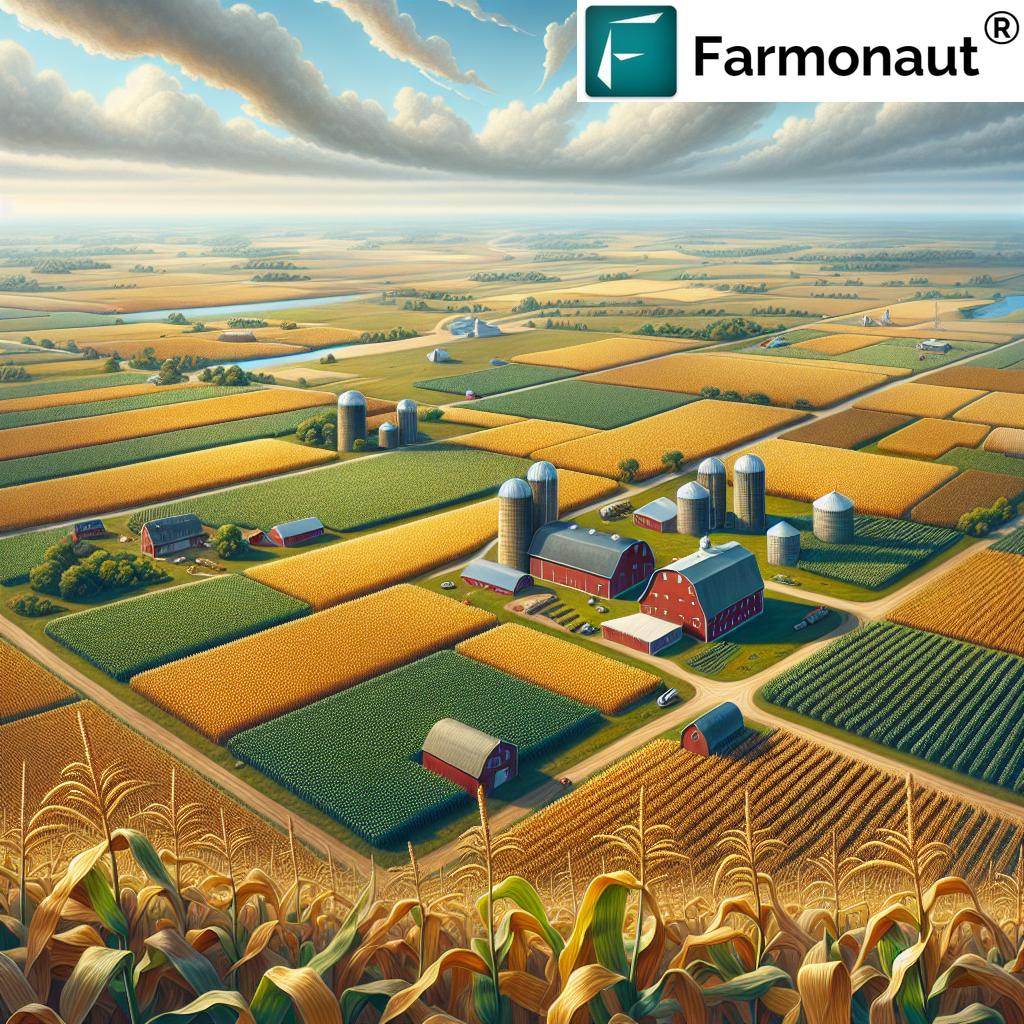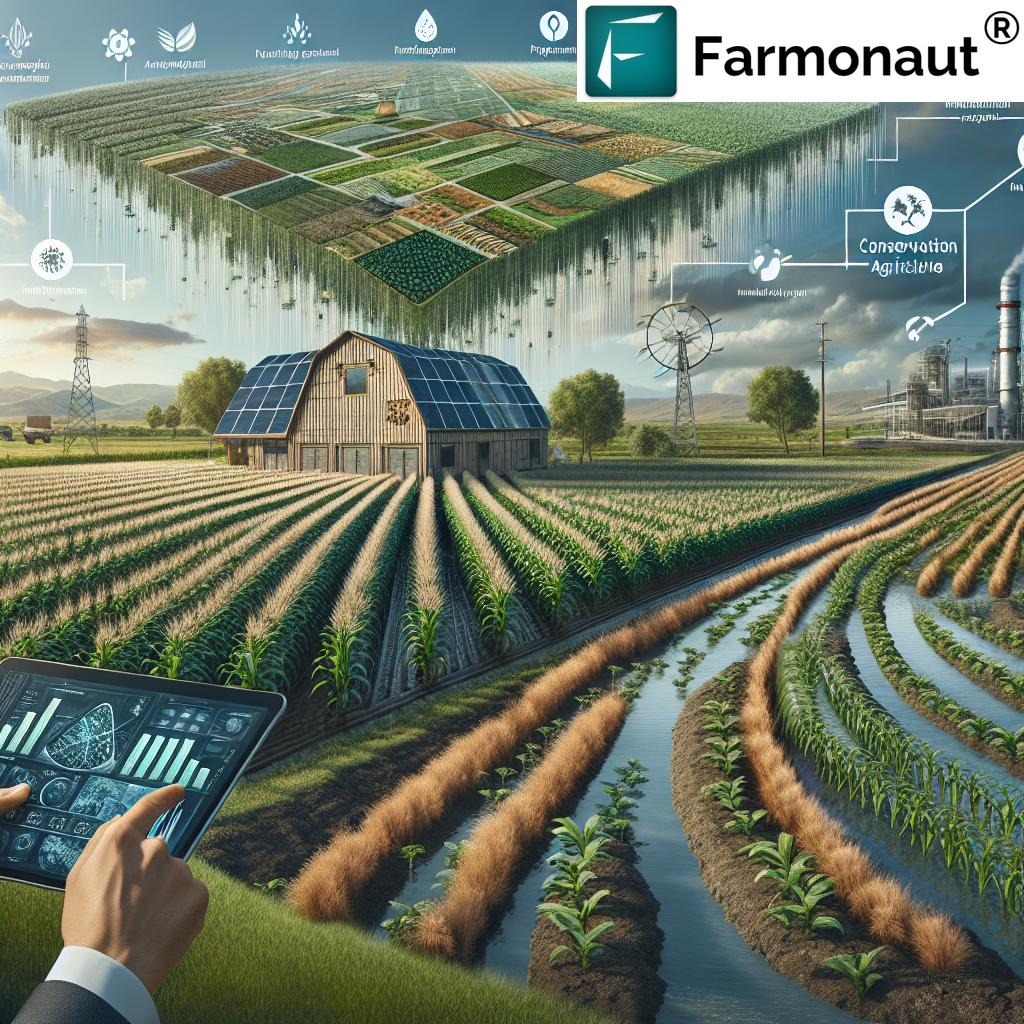Wet Weather Farming: 7 Top Tips for Madison, AL
Meta Description: Wet weather farming in Madison, AL—discover proven strategies for managing soil, water, and crops under wet conditions. Increase resilience while ensuring sustainability and healthy yields amidst excessive rainfall.
“Over 30% of Madison, AL farmland faces erosion risks during wet seasons—sustainable drainage can reduce losses by 50%.”
Introduction: The Scope of Wet Weather Farming in Madison, Alabama
The lush, fertile soil of Madison, Alabama, is both a blessing and a challenge for local farmers. The region’s climate brings periods of heavy rainfall, leaving fields vulnerable to waterlogging, soil erosion, and complex management issues. Wet weather farming refers to the agricultural practices and strategies that farmers employ to confront and overcome the unique challenges posed by excessive water and persistent wet conditions.
As climate patterns shift, managing waterlogged fields, protecting crop health, and maintaining sustainable operations become more crucial than ever. This comprehensive guide is tailored for Madison, AL, and similar environments—exploring not just how to survive the challenges of wet weather, but how to thrive.
We’ll walk through the seven best practices for wet weather farming—from drainage systems for agriculture to cover cropping and beyond—so you can optimize productivity and resilience in every season.
Challenges of Wet Weather in Agriculture
While rainfall rejuvenates soil and fills water tables, too much of it brings its own set of issues for farming:
- Soil Erosion: Intense rains wash away topsoil, stripping land of fertile nutrients necessary for healthy crop growth and yields.
- Soil Compaction: Wet soils are more susceptible to compaction, especially from heavy machinery, hindering root development and water infiltration.
- Reduced Field Access: Waterlogged fields delay planting, cultivation, and harvesting, which can disrupt farming schedules.
- Increased Disease Pressure: Moisture-rich environments fuel the proliferation of crop diseases and pests.
- Nutrient Leaching: Rainfall can cause vital nutrients to leach into lower soil layers, fast-tracking deficiencies in valuable crops.
To succeed in Madison, AL, farmers must adopt both traditional wisdom and modern, data-driven strategies for better absorption, protection, and sustainability in their operations.
“Implementing cover crops in wet weather can boost soil resilience by up to 40% in Madison, AL farms.”
7 Top Tips for Wet Weather Farming Success
Below, we share Madison-optimized, sustainable methods proven for wet weather farming—from drainage systems for agriculture to specialized crop management in wet conditions.
1. Improved Drainage Systems for Agriculture
Focus keyword: drainage systems for agriculture, managing waterlogged fields, wet weather farming
Effective drainage systems are the backbone of managing waterlogged fields in regions like Madison, AL.
Subsurface tile drainage is a proven solution, removing excess water below the soil surface and facilitating faster drying. Here’s how to maximize drainage effectiveness:
- Install Subsurface Tiles: Lay perforated pipes at an optimal depth and spacing for your soil type and field slope. This removes unwanted water and allows for timely planting and harvesting.
- Surface Ditches and Grading: Where applicable, use open ditches to provide relief during extreme rainfall.
Regular maintenance is essential—check for clogs and repair damage, as impaired drainage can exacerbate soil compaction and crop stress. If you’re starting out, consider cost-effective grading or contour drains for gently sloped fields.
Benefits of Drainage for Wet Weather Farming:
- Promotes root growth and vigorous crops
- Mitigates nutrient leaching and surface erosion
- Enables timely field operations (planting, harvesting)
For advanced, satellite-based farm management and soil moisture monitoring, Farmonaut’s platform helps farmers in Madison visualize and optimize water drainage patterns. Learn how our large-scale management tools can streamline resource application.
2. Soil Conservation Practices in Wet Conditions
Focus keyword: soil conservation, cover cropping, conservation tillage methods
Soil conservation is critical in wet weather farming. Unprotected, bare land is at high risk for soil erosion and nutrient loss. Employ these best practices:
- Cover Cropping: Use crops such as clover, rye, or alfalfa between main cropping periods. These act as a green ‘blanket,’ reduce runoff rates, and add valuable organic matter to your soil.
- Conservation Tillage: Minimize soil disturbance by reducing or eliminating plowing—this preserves structure and enhances water infiltration.
- Agroforestry: Integrate trees like pine, willow, or native species along field edges. These systems catch runoff and create windbreaks, further stabilizing your land during storms.
Why This Matters:
These sustainable farming practices not only decrease the risk of soil erosion, but also retain nutrients, increase soil resilience, and support lasting crop yields.
To monitor soil organic matter and the impact of your conservation measures, consider leveraging remote sensing for data-driven decisions. Farmonaut’s carbon footprinting tools help track your progress towards true agricultural sustainability.
3. Crop Management in Wet Conditions
Focus keyword: crop management in wet conditions, sustainable farming practices, crop rotation
Matching your crops to the local conditions dramatically increases resilience during wet periods. Some practical crop management tips:
- Choose Flood-Tolerant Varieties: Select corn, soybean, rice, or particular small grains adapted to high-moisture or regularly flooded soil for critical fields.
- Implement Crop Rotation: By rotating deep-rooted with shallow-rooted crops (e.g., rotating alfalfa with rye or cover crops), you enhance soil structure and reduce pest pressure.
- Stagger Planting Dates: Spread risk by planting at intervals, so all crops aren’t exposed to peak wet spells at once.
For real-time, field-level insights—such as identifying flooded areas, spotting stressed crops, and optimizing rotation windows—leverage Farmonaut’s crop health monitoring and advisory solutions for actionable, precision farming support.
4. Livestock Management in Wet Weather
Focus keyword: livestock management in wet weather, pasture resilience, areas
Wet conditions impact not only crops but also livestock well-being and pasture health. To protect pasture soil and animal health:
- Paddock Rotation: Subdivide grazing fields into smaller pastures, then rotate the livestock through. This reduces compaction and allows areas to recover.
- Sacrifice Areas: Assign a specific, less-productive portion of land for livestock during the wettest periods. This protects the rest of your pasture system.
- Supplemental Feeding: Supply hay or prepared feed to avoid overgrazing on vulnerable, wet fields—preserving root systems and pasture structure.
Monitoring animal movement and pasture recovery is crucial. For technology-driven, sustainable livestock management, review Farmonaut’s fleet and pasture resource management options.
5. Equipment and Machinery Care During Wet Weather
Focus keyword: equipment, machinery, wet conditions
Operating equipment in wet, muddy fields accelerates rust and mechanical wear, increases the risk of getting stuck, and can severely cause soil compaction. Key tips for wet weather equipment management:
- Anti-Rust Protection: Regularly clean and apply rust inhibitors to machinery—pay attention to joints and frames.
- Specialized Machinery: Where frequent wet conditions occur, invest in forage harvesters, sprayers, or tractors with wider tires or tracks, which spread the load and reduce soil compaction.
- Routine Checks: Inspect hydraulics, brakes, and electronics which are more susceptible to wet weather damage.
For large or commercial farming operations, our fleet management system offers optimized tracking and resource management—so that all field activity is both efficient and resilient to adverse weather.
6. Water Management & Rainwater Harvesting Techniques
Focus keyword: rainwater harvesting techniques, water management
While excessive water is the root of many wet weather farming issues, with the right systems it can become an asset. Consider integrating these sustainable options:
- Rainwater Harvesting: Collect excess rainfall from barn and house roofs in tanks or ponds—then reuse it for livestock or irrigation during dry spells, lowering groundwater reliance.
- Contour Farming & Terracing: On sloping land, implement gentle ridges and level steps (terraces) to slow down surface runoff, allowing more water infiltration into the soil.
- Retention Ponds: Design strategic low spots for reservoir construction—these ponds can buffer excessive water flow, store nutrients, and serve as wildlife habitat buffers during storms.
Rainwater harvesting not only mitigates flooding risk but also ensures you have water security in drought years. For advanced tracking of moisture levels and efficient irrigation planning, try Farmonaut’s real-time soil moisture and crop advisory tools.
7. Crop Rotation and Diversification
Focus keyword: crop rotation, improve soil, enhance resilience
A diverse cropping schedule enhances soil structure, breaks disease cycles, and improves resilience to weather extremes. Key advantages:
- Root Systems Variety: Deeply-rooted crops like alfalfa break up compaction, whereas shallow roots stabilize upper layers and are less affected by saturated subsoils.
- Pest and Disease Reduction: Rotation prevents disease and pest build-up common in monocultures—especially effective in moist, pest-prone environments.
- Soil Health Improvement: Each crop contributes unique organic matter and nutrients—supporting robust, year-round fertility.
With data-driven advisory systems, we at Farmonaut can help identify the most effective rotation patterns and monitor their impact on field-level crop health. Explore our advisory platform for recommendations tailored to Madison, AL’s climate and soils.
Recommended Tools:
- Farmonaut Carbon Footprinting — Track your field-level carbon impact and improve soil health over time.
- Product Traceability System — Use blockchain to certify farm product origins and methods for your buyers.
- Crop Loan & Insurance Verification — Leverage satellite verification to secure timely farm financing and insurance claims.
API Access: Developers or agri-businesses interested in automating weather, soil, or crop health monitoring can integrate with Farmonaut’s Satellite & Weather Data API. Find the developer docs here.
How Farmonaut Elevates Wet Weather Farming in Madison, AL
We at Farmonaut are proud to support farmers in wet climates like Madison, AL, with cutting-edge technology combining satellite imagery, AI-driven advisory, and blockchain solutions:
- Satellite Crop Health Monitoring: Detect waterlogging, disease, or declining soils—down to individual fields.
- Jeevn AI Advisory: Access real-time advice, warnings, and tailored rotation schedules for rain-heavy regions in the US.
- Resource and Fleet Management: Keep all field activities coordinated, track machinery usage, minimize unnecessary equipment deployments on waterlogged soils.
- Carbon Footprinting: Document sustainability improvements as you implement better drainage, tillage, and cover cropping methods.
Our data-driven platform doesn’t just alert you to wet weather hazards—it empowers actionable, profitable decisions to build a more resilient and sustainable farming operation.
Wet Weather Farming Strategies: Effectiveness, Cost, and Sustainability Impact
| Strategy Name | Primary Benefit | Est. Cost ($/acre) | Difficulty | Sustainability Impact (1–5) | Recommended Crop Types |
|---|---|---|---|---|---|
| Subsurface Tile Drainage | Improved drainage, reduced flooding | $750–$1,500 | High | 4 | Corn, soybeans, cotton, rice |
| Cover Cropping | Soil erosion prevention, boosts organic matter | $25–$60 | Medium | 5 | All major row crops |
| Conservation Tillage | Minimizing soil compaction & runoff | $15–$45 | Low–Medium | 5 | Corn, soybean, wheat |
| Agroforestry | Runoff reduction, habitat creation | $70–$120 | Medium | 4 | Pasture, row crops, vegetables |
| Rainwater Harvesting | Water security, drought & flood buffer | $200–$500 | Medium | 4 | All crops, livestock |
| Paddock Rotation (Livestock) | Pasture health and resilience | $20–$80 | Medium | 5 | Beef, dairy, sheep, goats |
| Crop Rotation/Diversification | Soil & pest management, risk reduction | $10–$35 | Low | 5 | Corn, cotton, soybean, small grains |
Use this table as a quick reference to balance investment, practicality, and sustainability as you plan your wet weather strategy.
Frequently Asked Questions (FAQ)
What is wet weather farming?
It’s the collection of practices and management strategies used to address the challenges of excessive rainfall, waterlogged fields, and soil damage—common in regions like Madison, AL.
How can I prevent soil erosion in wet conditions?
Soil erosion prevention involves using cover crops, conservation tillage methods, and installing drainage systems to slow water runoff and protect soil structure.
Are at-risk crops salvageable after flooding?
With prompt drainage and good air circulation, some crops recover. Using satellite monitoring (like Farmonaut’s) can help identify which sections of a field may survive and which need to be replanted.
What role does livestock have in soil management during wet weather?
Proper livestock management in wet weather, such as rotating paddocks or designating sacrifice areas, prevents overgrazing and compaction, sustaining soil health.
How does rainwater harvesting help beyond irrigation?
It buffers fields against excessive runoff by storing excess water; it also contributes to on-farm biodiversity and water security in dry periods.
How can Farmonaut help in wet weather farming?
We provide real-time, satellite-based crop and soil health monitoring, AI-driven advisory, resource and equipment tracking, and carbon footprint calculation—empowering Madison, AL farmers to make informed decisions year-round.
Conclusion: Building Resilience in Madison, AL Agriculture
Facing wet weather is both a test and an opportunity for farmers in Madison, AL. Through a combination of improved drainage, soil conservation practices, strategic crop and livestock management in wet weather, innovative equipment care, smart water management, and advanced technology, your agricultural operations can be both sustainable and profitable.
Our mission at Farmonaut is to empower every farmer with the tools, insights, and actionable data needed to adapt to any season. When you adopt these techniques, you not only protect your land and boost your yields—you join a growing movement for resilient, sustainable agriculture in the face of climate uncertainty.
Ready to transform your wet weather farming?
Take the next step with Farmonaut for Madison, AL—your partner in sustainable, data-driven agriculture.















